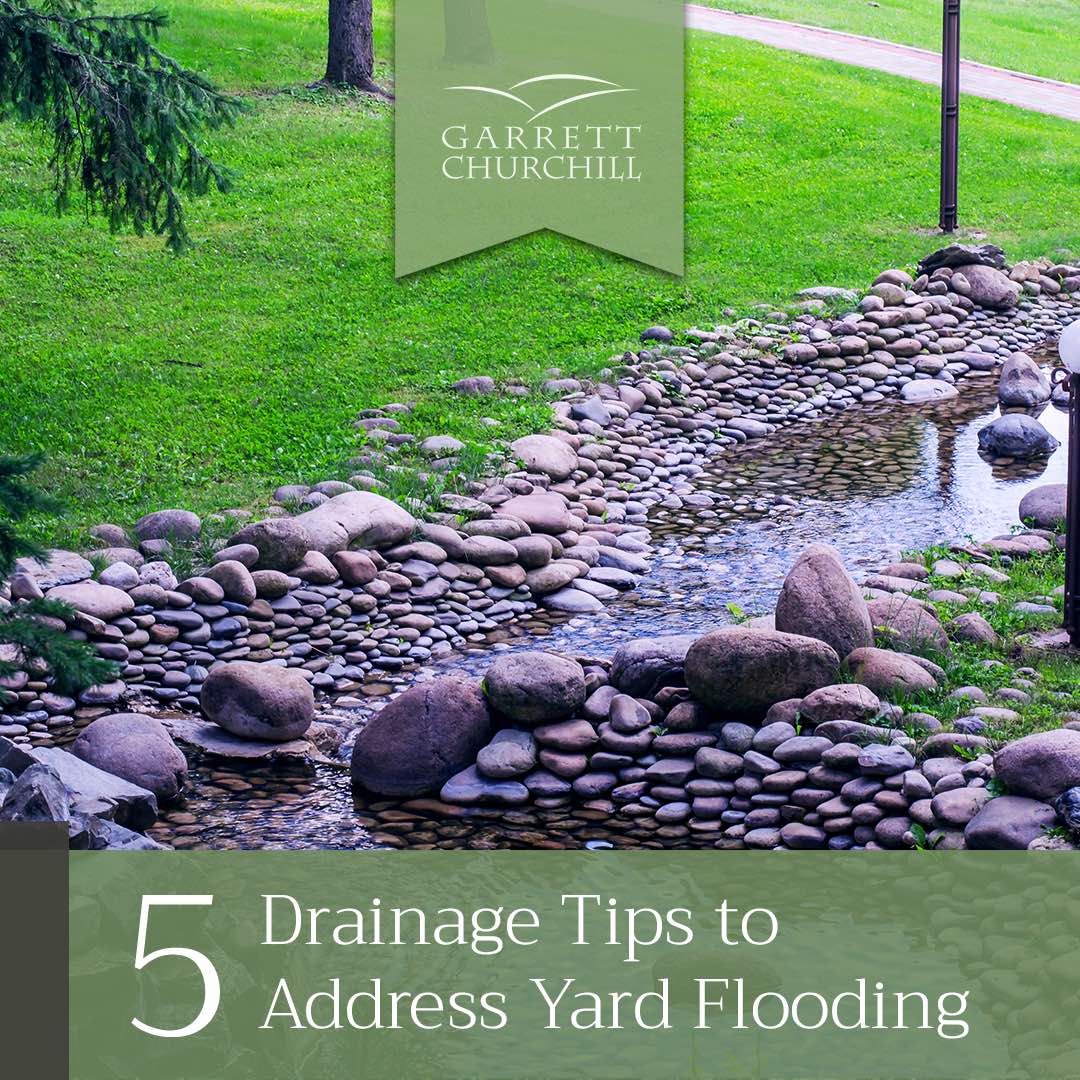5 Drainage Tips to Address Yard Flooding
Proper drainage is crucial when it comes to protecting the appearance and structure of your property. Puddles and muddy patches are more than just a nuisance; standing water can damage your lawn and plants, attract unwanted pests, and potentially leak into your home.
If your landscape is beginning to look more like a moat than a yard, you may want to take a look at your current drainage systems and their effectiveness. Before you invest the time and expenses into installing a new drainage system, take some time to assess the situation. Ask yourself the following questions:
- Where is the water coming from?
- Where does the water collect the most?
- Where does the water need to go?
Common Causes of Drainage Issues
There are several possible reasons behind your yard flooding. Some common factors include:
- Slope location. If a slope leads toward the house, garden, or to a flat plane, water will inevitably pool in one area.
- Problematic downspout. If your gutter’s downspout is too short and points directly onto the yard with no way to divert its flow, you can end up with excess water.
- Unhealthy soil. If water isn’t redirected or absorbed by the soil, it will continue to sit on top of the lawn.
- Obstructions. Hardscaping elements, raised garden beds, or heavy vegetation may prevent water from running through the yard and into the designated drainage area.
In order to effectively address your yard flooding, you need to first understand why it’s happening.
5 Drainage Tips to Address Yard Flooding
The best solution for your landscape depends on the reason behind your drainage issues. What works for your neighbor may not work as well for you—different problems necessitate different solutions.
Some of our favorite tips to address yard issues include:
Tip #1: Work with the slope.
There are several ways to use yard slopes to your advantage. With an aesthetically appealing dry creek bed, you can channel water to a designated draining area or collection point by designing the path of the creek.
Retaining walls also offer structural slope support to prevent landslides and erosion, and can even come with built-in drainage features.
Tip #2: Extend your downspout.
Redirect the water in your gutters by extending your downspout so the runoff flows away from your house and garden beds. Just make sure you’re not sending it into your neighbor’s yard or to another problem area.
Alternatively, you can keep the short downspout and collect water in a rain barrel to use in your garden later.
Tip #3: Remove blockages.
If something appears to be blocking your yard’s drainage path, the solution may be as simple as removing, relocating, or replacing the obstruction. For example, if a raised pathway is stopping water in its path, you may want to replace it with something more drain-friendly such as crushed gravel.
Another option is to channel the water to run around or underneath certain areas of the property with the installation of a French drain.
Tip #4: Aerate your lawn.
Keep your lawn looking and feeling healthy with aeration. Aerating your lawn involves making small, deep holes through the grass and into the soil. This breaks up compacted soil, allows for the absorption of air and nutrients, and encourages effective yard drainage as the water runs into the holes rather than sitting on top of the lawn.
Tip #5: Build a rain garden.
If there’s one area of your landscape that’s seemingly impossible to drain, consider embracing the sogginess altogether by building a rain garden. Instead of trying to divert the water, use a rain garden as a collection point for rain and runoff from other areas of the yard.
While a rain garden won’t necessarily put an end to your drainage issue, it can certainly make your yard more functional and aesthetically pleasing. Fill your rain garden with water-loving plants and grasses for a cost-effective, alternative drainage solution.
To learn more about the right drainage solutions for your landscape, contact our expert landscapers to schedule an on-site consultation. Learn more at http://garrettchurchill.local/outdoor-drainage.
